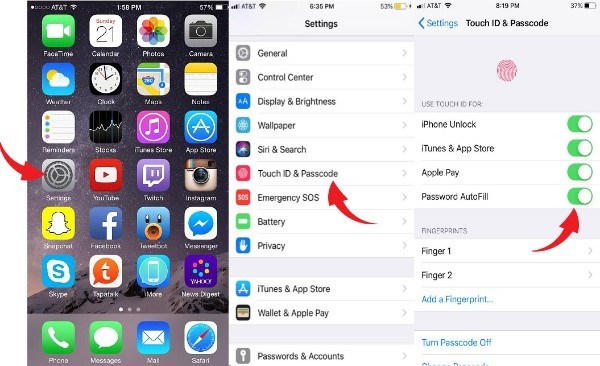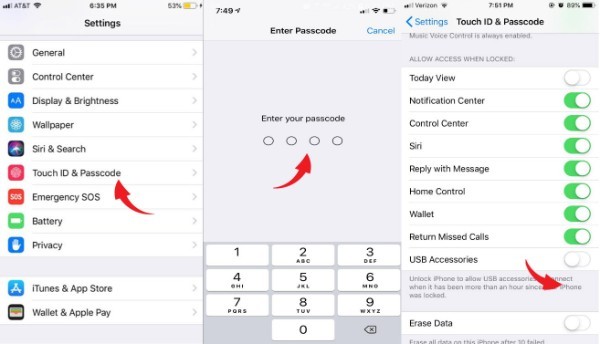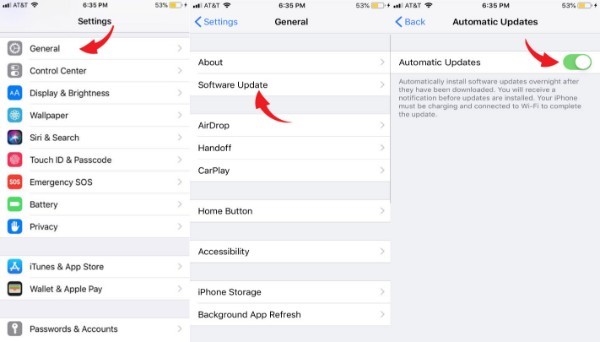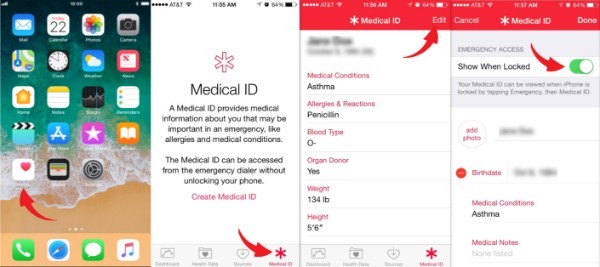Apple is long celebrated for its dedication to protecting your data and privacy on your iPhone. The latest version of its operating system, iOS 12, adds a number of security features that will continue to safeguard its iPhone users from ever-evolving threats.
But before you can benefit from the newest security features on your device, you need to manually update your iPhone system to the 12.1.4 software using either iCloud or iTunes.
Whether you are buying a new iPhone XS, XR, or XS Max or you are upgrading the system on your current iPhone, there are a lot of new features to Apple iOS 12.
In this episode of Komando on Demand, Kim looks at the iOS 12 operating system’s features and enhancements that differentiate it from previous iOS versions.
Kim also talks to Rob Walch from the “Today in iOS” podcast about some hidden tips and tricks of iOS 12 you might not know about.
Once you have updated your mobile device, there are five security features you should turn on right now:
Set autofill to work only with Face ID or Touch ID
The autofill feature in Safari is the epitome of convenience for those who struggle with remembering various usernames or passwords and having to type them correctly when sites do not have the password eye symbol. However, autofill has its flaws and hackers are privy to them, leaving your data vulnerable.
Enter Touch ID and Face ID. Both of these ‘biometric’ security measures offer an advanced level of security for your device and its contents. Setting this feature is easy and should be used in place of autofill.
Setting autofill to work only with Face ID or Touch ID:

Go to Settings > Face ID and Passcode, or Touch ID & Passcode (depending on the model of your device) > Enter Passcode and move Password Autofill slider to “on.”
Turn on USB restricted mode
Another feature you should turn on immediately is the USB restricted mode. Why? Because of companies like Grayshift. They designed an inexpensive, high-tech device called GrayKey that uses two Lightning plugs to connect to an iOS device to crack your passwords.
How effective is GrayKey’s method? According to experts, the device can crack a four-digit code in a couple of hours, and decrypt a six-digit password within a few days. Although GrayKey is used by law enforcement officials, knowing others may have the potential to design a similar device is frightening. Enabling the USB restrictive mode prevents access to your Lightning port if your iPhone is locked for over an hour.
Enabling the USB restrictive mode:

Go to Settings >Face ID & Passcode or Touch ID & Passcode > Enter Passcode > Scroll down and mark “off” on USB Accessories.
Turn on automatic updates
Until the release of iOS12, iPhone users had to manually install updates. No longer, as Apple now offers automatic updates for your mobile device. This will not only save you time, but it will also keep your iPhone safer.
Setting your smartphones to allow automatic updates will provide your phone with new security features and patches behind the scenes. Ensuring your operating system is up to date is one of the best methods of ensuring protection to your phone and data.
Switching to automatic updates:

Go to Settings > General > Software Update and turn on the automatic updates feature.
Set up Medical ID and emergency contacts
The security of your iPhone is just as important as protecting your physical well-being. It is for this reason you should set up the Medical ID and emergency contacts on your device.
Medical ID allows first responders to access critical medical information from your lock screen without a Passcode. Viewable information includes your allergies, medical conditions, and emergency contacts.
Setting up your Medical ID:

Go to Health App > Medical ID tab > Edit > Turn on Show When Locked > Enter health information including birth date, blood type and so forth.
Review location settings
Ever notice the small arrow up in the corner of your home screen? This arrow represents when your device is transmitting data to Apple or apps about where you are and where you have been. Although this feature is necessary when performing tasks such as hailing an Uber, there are times when you do not want to share your location data.
Before iOS 11, third-party apps were able to gather location data on you regardless of whether you were using the app. Since the release of iOS 11, you can review and restrict this access to only occur when you are using an app.
Reviewing the location settings:

Go to Settings > Privacy > Location Services and tap each app you wish to change.
Looking for the latest news on technology, or security issues and the precautions you can take to protect your personal information and data? Kim Komando’s podcasts will keep you up to date.

